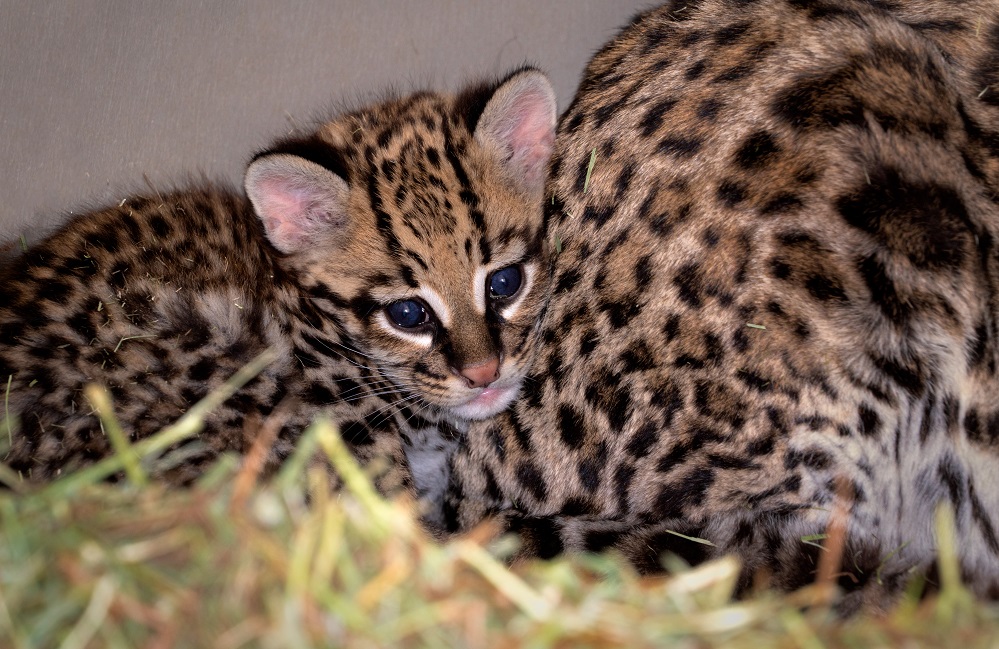Hello Kitty! Endangered Ocelot Born at the Arizona-Sonora Desert Museum with Assistance of Cincinnati Zoo Scientists
Ocelot birth helps to further validate new artificial insemination method

CINCINNATI (June 11, 2018) – In collaboration with the animal care staff at the Arizona-Sonora Desert Museum, scientists from the Cincinnati Zoo’s Center for Conservation and Research of Endangered Wildlife (CREW) have produced their second pregnancy in ocelots using a novel fixed-time artificial insemination (AI) method. For this approach, the female ocelot received a daily dose of progesterone mixed in her food to suppress natural ovarian activity (similar to human birth control pills) and then, after a short withdrawal period, was treated with two hormone injections to induce ovarian follicle growth and ovulation at a precise time point. For the AI, semen was collected from the Desert Museum’s male ocelot and the female was inseminated using a laparoscopic oviductal AI method developed by CREW scientists. A total of three million motile spermatozoa were used for the AI. The birth of a healthy female kitten, after an 82 day gestation, provides further proof that this fixed time AI approach can serve as a valuable adjunct to natural breeding for ocelot conservation efforts in zoos.
Dr. Bill Swanson, CREW’s Director of Animal Research and Coordinator of the Ocelot Species Survival Plan (SSP) for the Association of Zoos & Aquariums (AZA), conducted the AI procedure with the assistance of CREW Post-Doctoral Scientist, Dr. Raquel Gonzalez. “Laparoscopic oviductal AI allows us to use much fewer spermatozoa for insemination in wild cats, which is fortunate in this case because we only recovered a small number of sperm from the male ocelot,“ said Dr. Swanson. “Now, with this fixed time method, we can conduct the AI at the precise moment needed for fertilization, and place the sperm almost directly on top of the eggs within the oviduct”.
The AZA’s Ocelot SSP manages 96 ocelots housed in 52 North American zoos, monitoring their demographic and genetic parameters, and making breeding recommendations for valuable pairs. Ocelots have been on the U.S. endangered species list for more than 40 years. Small sized cats, including the ocelot, have been relatively neglected in both scientific and conservation circles compared to larger cat species, with little information on their natural history or conservation status in the wild. Population projections indicate that several small cat species, including the ocelot, will see their genetic diversity reduced to dangerously low levels in zoos over the next 50 years.
Reproductive sciences, including techniques such as artificial insemination, in vitro fertilization, embryo transfer, and sperm and embryo cryopreservation are playing a key role in helping to address the conservation and management challenges associated with maintaining these small cat species.

